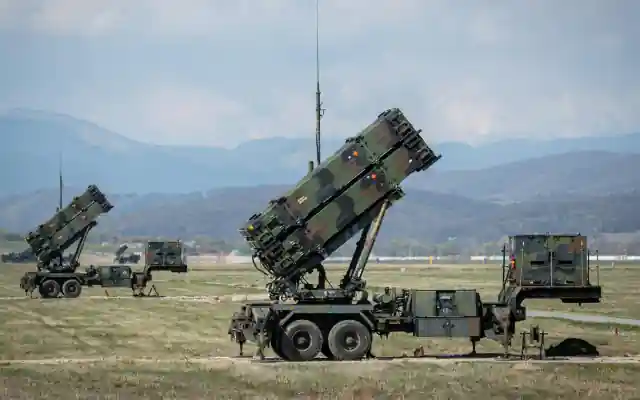As reported by the Financial Times, NATO’s latest assessment has unveiled a startling deficiency in Europe’s air defense capabilities.
Currently, Europe possesses merely five percent of the air defense resources required to protect its eastern flank, a vulnerability that Russia’s ongoing aggression against Ukraine has dramatically highlighted.
This revelation underscores an urgent need for bolstered defense systems, a matter set to dominate discussions at the upcoming NATO foreign ministers meeting in Prague.
The gravity of the situation is stark: despite the pressing necessity, NATO member states are collectively able to supply only a small fraction of the air defense infrastructure needed to secure Central and Eastern Europe from a potential large-scale assault.
The region’s defense readiness is precariously low, raising significant concerns among European leaders and military strategists.
Kyiv has been a vocal advocate for increased defense support, seeking additional systems to protect its cities, military forces, and critical infrastructure from relentless Russian bombardments.
The inadequacy of Europe’s current air defense capabilities has thus become a focal point not only for Ukraine but for the broader NATO alliance.
Greek Prime Minister Kyriakos Mitsotakis and Polish Prime Minister Donald Tusk have been particularly vocal in identifying air defense as a critical vulnerability within the region’s security framework.
Mitsotakis has proposed the creation of a comprehensive European air defense system, drawing inspiration from Israel’s highly effective Iron Dome.
This proposal aims to provide a robust and integrated defense mechanism capable of intercepting a wide range of aerial threats.
In the face of growing demands for greater European self-reliance in defense matters—exacerbated by Russia’s invasion of Ukraine—Germany and France have initiated discussions on enhancing cooperation to strengthen European air defenses.
This collaborative effort between Berlin and Paris signals a proactive approach to addressing the continent’s defense shortfalls.
German Chancellor Olaf Scholz and French President Emmanuel Macron have both emphasized the importance of a united and strategic response to Europe’s defense challenges.
Their initiative aims to pool resources, share technological advancements, and develop a cohesive strategy that would enhance the continent’s collective security.
The Prague meeting of NATO foreign ministers is expected to yield concrete proposals and action plans to address these critical defense gaps.
The discussions will likely focus on increasing investments in air defense systems, improving interoperability among member states, and exploring new technologies and strategies to counter aerial threats.
The urgency of this issue cannot be overstated. As Europe grapples with the geopolitical ramifications of Russia’s aggression, the need for a robust and reliable air defense system becomes ever more pressing.
Inspired by Israel’s Iron Dome, the proposed European air defense initiative represents a potential game-changer in the region’s defense strategy.
As NATO prepares for its crucial discussions in Prague, the focus will be on transforming these strategic insights into actionable measures.
Ensuring the security and sovereignty of Europe in the face of evolving threats will require not only political will and cooperation but also significant investments and technological advancements.
In the words of Greek Prime Minister Mitsotakis, “A united and strong air defense system is not just a necessity; it is an imperative for the security and future of Europe.”
This sentiment captures the essence of the current defense discourse, highlighting the critical need for a coordinated and comprehensive approach to safeguarding Europe’s skies.
This article was created using automation technology and was thoroughly edited and fact-checked by one of our editorial staff members



